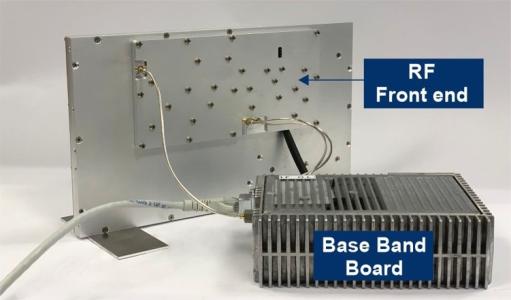Miniaturized Terminal for Massive Uncoordinated Satellite Access Networks
Programme
TDE
Programme Reference
T506-504ET
Prime Contractor
EGATEL S.L.
Start Date
End Date
Status
Closed
Country
Spain

Objectives
The activity targets the design and bread-boarding of a miniaturized Internet of Things (IoT) terminal, including the antenna, RF and baseband circuitry as well as the housing, to devise cost-effective solutions. The target cost reduction, compared to the existing satellite IoT terminals is one order of magnitude. The final target IoT terminal, including the antenna shall be an integrated highly compact and low weight unit.
Description
The need for miniaturization of Satellite IoT terminals, in terms of size, weight and consumed power, is well recognized as a key enabler for the adoption of satellite IoT solutions. ;There are on-going or planned design and development activities targeting power and energy efficient access protocols for direct satellite access of IoT terminals (in the excess of 10000 units). Such techniques may allow reducing the required transmit power and maintaining an efficient use of amplifiers operating close at saturation. Despite such development, there are still pressing needs to devise innovative architectures for IoT terminals that allow more efficient integration of the antenna, RF front end and basedband unit to significantly reduce the cost of terminal. The antenna is considered to be an enabling element in this chain to achieve the compactness and performance required.
The target is to reduce drastically the size and to divide by 10 the recurring cost of the IoT terminals, which could be achieved for example by employing novel antenna architectures and simplifying the design, by reducing the number of components while keeping the performance.
;
The novel antenna design shall comply with the antenna needs for such terminals, i.e. low cost, low profile and possibly multi-frequency operation.
;
For IoT applications low maintenance is an important aspect. Often these terminals are in remote locations; hence antennas without moving parts are preferred. Other available technologies like Advanced Solar Antenna ;(ASOLANT), integrating the antenna with the solar panel, could be of interest to provide autonomous power supply.
;
While emphasizing on Ku/Ka-band services of GEO satellites, the applicability of the proposed integrated solution to other frequency bands (such as UHF) and LEO satellites shall also be investigated.
;
The activity consists of the following tasks:
;
- Define the operational scenarios, architectures, applicable techniques to antenna, ;RF front-end for satellite IoT ;terminals,
- Design and develop prototype (breadboard) integrated antenna and RF front end solutions to achieve target figures of merit of the overall satellite IoT terminal.
- Carry out tests to characterize the relevant performance metrics
Application Domain
Telecommunications
Technology Domain
6 - RF Subsystems, Payloads and Technologies
Competence Domain
5-Radiofrequency & Optical Systems and Products
Keywords
4-Ground Segment
Initial TRL
TRL 2
Target TRL
TRL 3
Achieved TRL
TRL 4
Public Document
Final Presentation
